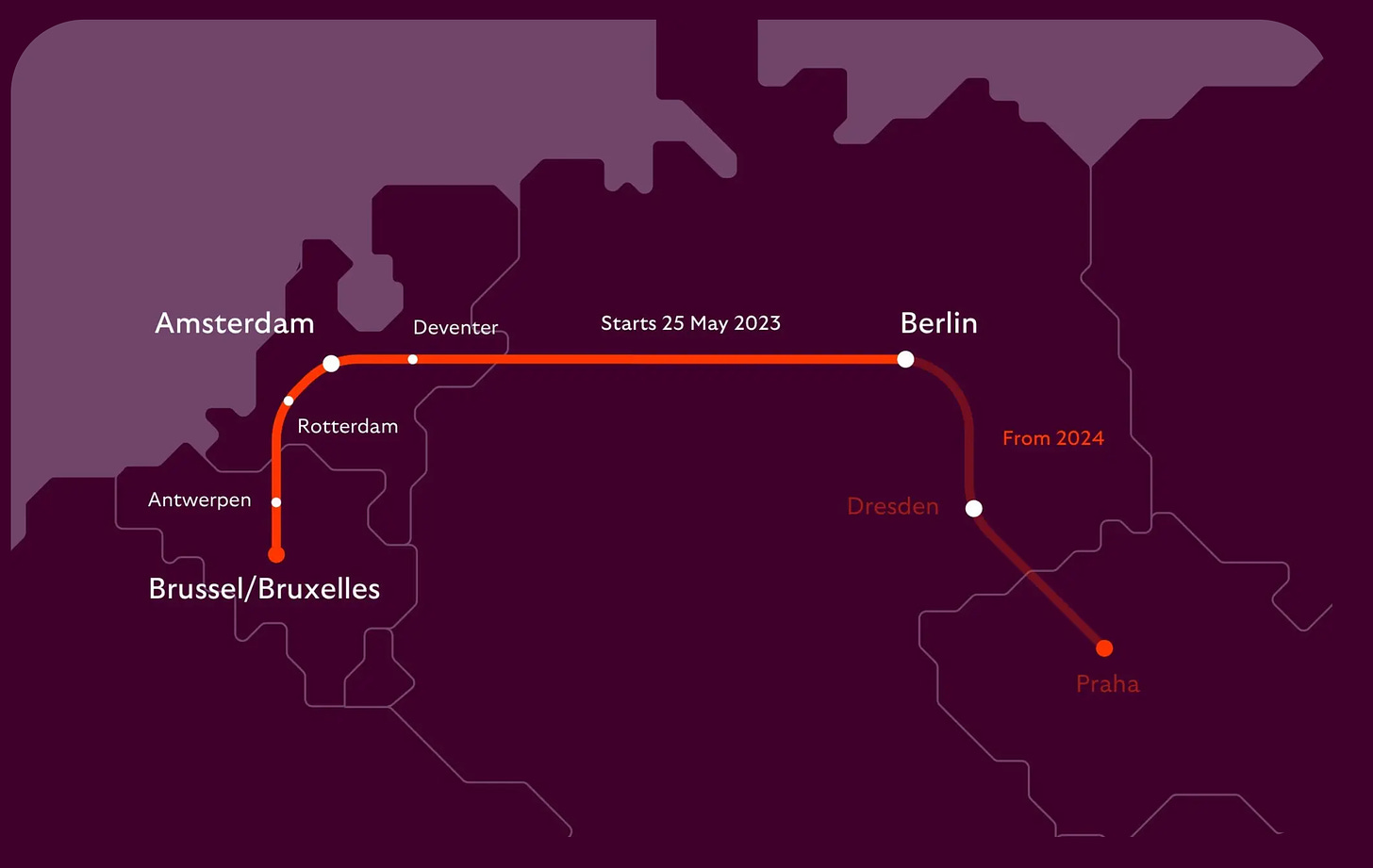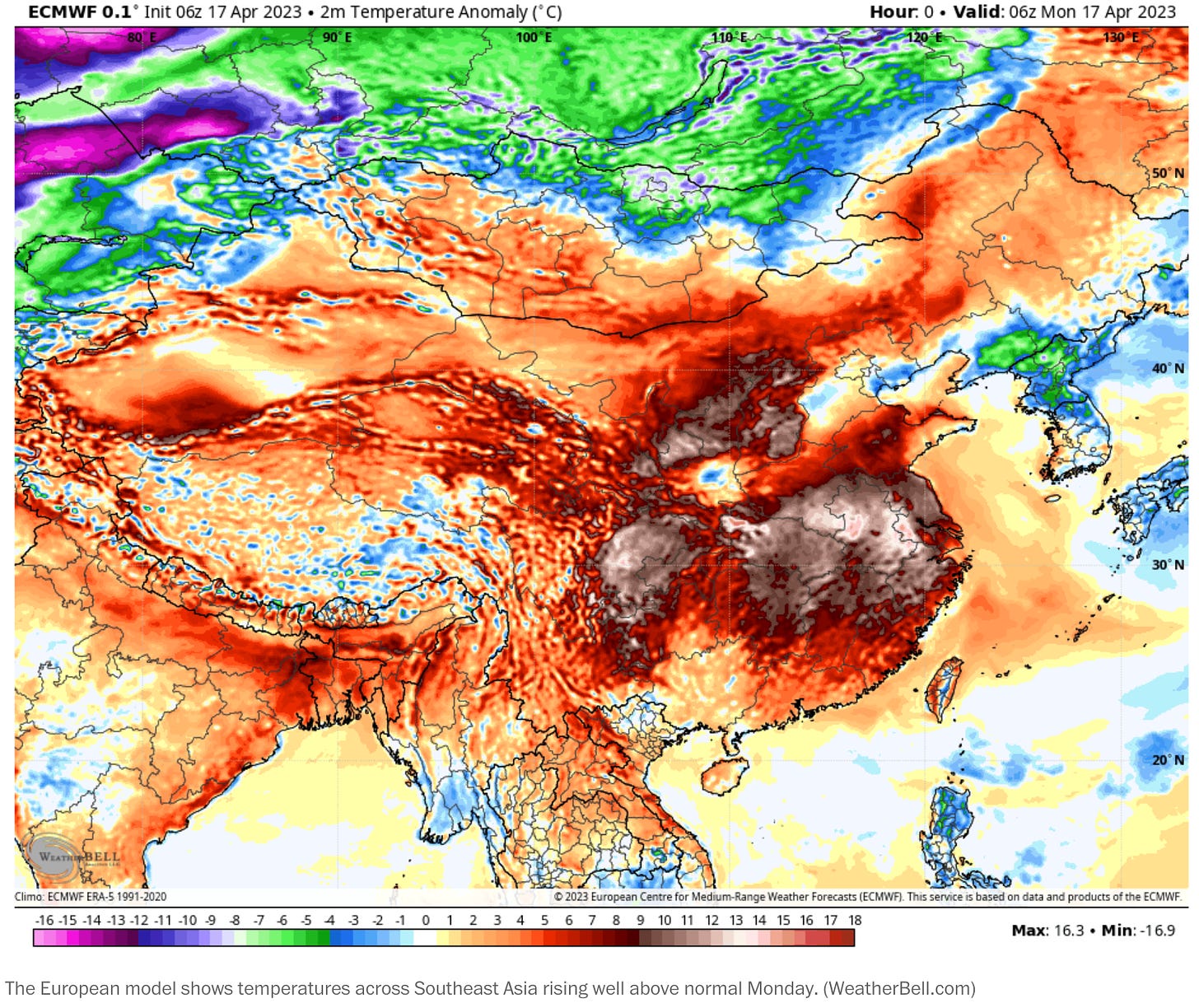Goodnight trains, Google, and Ungodly heat
A collection of stories about climate infrastructure around the world
Europe’s transportation sector is just showing off now
The French government placed a ban on flights for trips that can be completed by train in 2.5 hours. They are also planning on cracking down on private jets. The decision was the result of a Citizens’ Assembly. (See, you can make a difference!)
This happened just a week before the startup European Sleeper launched its very first sleeper train trip between Brussels and Berlin. The train will run three times a week between 7:22pm and 6:48am (I agree, those are oddly precise numbers). The startup is already planning its next journey between Amsterdam and Barcelona.
Meanwhile, in Indonesia, a new high-speed train completed the journey from Jakarta to Bandung in one hour for the very first time.
Despite the war, Ukraine was able to install 114 megawatts of capacity compared to the UK’s 1 megawatt. Ed Miliband, a UK politician focused on climate change and net zero goals, called it a “terrible indictment” of the UK government. On the other hand, go Ukraine!
According to a New York Times article, the investment in wind was a strategic decision after over a year of Russia targeting the country’s power grid. Wind turbines make a much harder target for missile strikes, and they are hundreds of feet apart so it would require far more missiles to do real damage. It is also much easier to repair the transmission system than it is to repair power plants.
If you like to spend time on Google Earth traveling to far flung places from the comfort of your own home, your night-time entertainment just got more interesting.
Google launched an environment tool that lets you see location-specific data for building and transportation emissions as well as the potential for rooftop solar. The tool, called Environmental Insights Explorer, is hoping to provide a foundation for identifying effective strategies for reducing emissions.
In April, severe heat waves washed over Asia, from India to Thailand to China. The temperature hit 40C (104F) degrees in many of these places. While some cities saw these temperatures last year, the swaths of land impacted are much larger. These record temperatures lasted for weeks — enough to earn a Wikipedia page. The World Weather Attribution Organization said that the heat wave was made at least 30 times more likely because of climate change (I know, shocker).
Heat is, and has always been, a silent killer. All around the world, cities are investing in heat management and action plans. They are trying to plant more shade trades, build cooler transportation infrastructure, and designate libraries and other public spaces as cooling centers. Some cities in the US are building Apps to help people locate pools and air conditioned buildings during heat waves. But as temperatures rise, so will energy costs. Heat is likely to be a major headline all over the world this summer.
Sea level rise is a relatively simple concept. The world is warming, glaciers melt, the waters rise. But there are a few nuances that are worth noting. In addition to melting ice, the ocean is rising because of thermal expansion. Water is absorbing heat, and as it heats, it expands, causing sea levels to rise. The other fun nuance, according to NASA scientists, is that sea levels rise at different rates around the world. The first reason for this is that currents distribute water differently throughout the world, and the second has to do with where the ice is melting.




